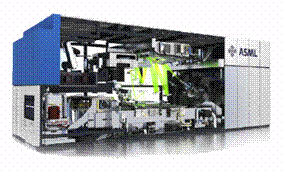Extreme ultraviolet lithography (EUVL) is an enabling technology that the microelectronics industry intends to introduce for high volume production of leading- edge semiconductor integrated circuits beginning in the 2014 time frame. In EUVL 13.5nm light is reflected at near-normal incidence by multilayer mirrors that consist of precisely engineered Mo/Si multilayer coatings before patterning the photoresist, as shown in the Figure (right). Presently, the deposition of carbonaceous layers on the mirror surfaces is one of the key problems that must be overcome to attain commercial viability of EUVL. These layers, formed by the radiation-induced activation of adsorbed organic molecules, diminish the reflectivity of the multilayer coatings on the EUV mirrors, reducing the throughput of the EUV lithography tools. In addition, carbonaceous layers also cause distortion of the EUV radiation wavefronts, compromising the ability to print uniform features. In collaboration with Tom Lucatorto , Shannon Hill and Nadir Faradzhev at the National Institute of Standards and Technology (NIST) in Gaithersburg, MD we are exploring the potential to use atomic hydrogen (AH) to remove carbonaceous layers from EUV mirrors without compromising the atomically smooth mirror surface. Our research includes studying the effects that chlorine, phosphorous and sulfur atoms have on the etching of carbonaceous layers by AH as well as the potential for electron beam induced deposition (EBID) to create contaminant films that mimic the properties of those created on EUV mirrors.

Extreme Ultraviolet (EUV) lithographic tool for patterning photoresists